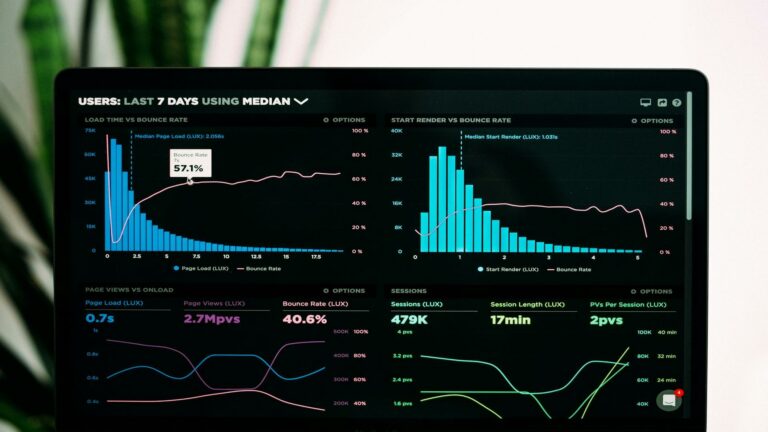Optimize Website Video Content
Optimizing Website Video Content for Maximum Impact
In today’s digital landscape, video content has become a vital part of online marketing strategies. To ensure that your videos are not only engaging but also optimized for search engines, follow these comprehensive strategies to optimize website video content:
- Quality is paramount: Ensure your videos have high-quality visuals and clear audio. Exceptional video content can significantly boost conversions, while poor quality may negatively impact engagement rates.
- Optimize video titles and descriptions: Use keyword-rich, descriptive titles and detailed descriptions to improve search visibility. Incorporate relevant keywords that your target audience is searching for to enhance your video’s chances of ranking in search results.
- Implement schema markup: Use structured data to help search engines better understand and index your video content. This can improve your chances of appearing in rich results and universal search.
- Create compelling thumbnails: Design eye-catching, relevant thumbnails that entice users to click on your videos. Custom thumbnails that are unique to your brand can significantly improve click-through rates.
- Include video transcripts: Provide text transcripts of your videos to improve accessibility and give search engines more content to crawl and index.
- Optimize for mobile viewing: Ensure your videos are mobile-friendly, as a significant portion of video consumption happens on mobile devices.
- Leverage video sitemaps: Submit a video sitemap to search engines to help them discover and understand your video content more effectively.
By implementing these strategies, you can significantly improve the visibility and performance of your website’s video content, driving more organic traffic and engagement from your target audience.
1. Understand the Importance of Video Optimization
Optimizing Website Video Content for Enhanced User Experience and SEO
Video optimization is crucial for enhancing user experience and improving search engine rankings. Well-optimized videos can significantly increase the time users spend on your site, which is a key factor in SEO. To maximize the impact of your video content, consider the following strategies:
- Quality over quantity: Ensure your videos are high-quality in both visuals and audio. Exceptional video content can help increase conversions, while low-quality recordings may negatively impact engagement rates.
- Optimize video titles and descriptions: Use keyword-rich, descriptive titles and detailed descriptions to improve search visibility. This helps both users and search engines understand your video content.
- Implement schema markup: Use structured data to provide search engines with additional information about your videos, increasing the chances of appearing in rich results.
- Create engaging thumbnails: Custom thumbnails that are clear, high-quality, and relevant can improve click-through rates and overall user engagement.
- Include video transcripts: Transcripts make your content more accessible and provide additional text for search engines to crawl and index.
- Optimize for mobile viewing: Ensure your videos are responsive and load quickly on mobile devices to cater to the growing number of mobile users.
By implementing these optimization techniques, you can enhance the user experience of your website’s video content while simultaneously boosting your search engine rankings. Remember, the goal is to create valuable, engaging content that keeps users on your site longer and encourages them to explore more of what you have to offer.
2. Choose the Right Video Format
Choosing the Right Video Format for Web Optimization
Selecting the appropriate format for your videos is crucial when you optimize videos for the web. The right format can significantly impact loading times, compatibility across devices, and overall user experience. Here are some popular formats to consider:
- MP4 (H.264): Widely supported across browsers and devices, MP4 offers a good balance between quality and file size. It’s an excellent choice for most web video applications due to its compatibility with HTML5 and efficient compression.
- WebM: Ideal for web use, WebM provides high-quality video with lower bandwidth requirements. It’s particularly well-suited for WordPress sites and other content management systems that prioritize performance.
- AVI: While AVI offers high quality, its larger file sizes make it less suitable for web use. It’s better reserved for offline applications or when file size is not a concern.
- HLS (HTTP Live Streaming): This adaptive streaming protocol is excellent for delivering live and on-demand video content, adjusting quality based on the viewer’s internet speed.
When optimizing videos for faster loading times, consider using a combination of formats to cater to different devices and connection speeds. Always test your videos across various platforms to ensure optimal performance and user experience.
3. Compress Your Videos
Optimize Your Website’s Video Content for Better Performance
Large video files can significantly slow down your website, negatively affecting both user experience and SEO. To address this issue, it’s crucial to optimize your video content without compromising on quality. Here are some effective strategies to achieve this balance:
- Compress your videos: Utilize powerful compression tools like HandBrake or Adobe Media Encoder to reduce file sizes while maintaining visual quality. These tools offer various compression settings that can be tailored to your specific needs.
- Choose the right format: Opt for modern video formats like MP4 with H.264 codec, which offers excellent compression and is widely supported across devices and browsers.
- Implement adaptive bitrate streaming: This technique allows your video to adjust its quality based on the viewer’s internet connection, ensuring smooth playback and reducing buffering.
- Use a Content Delivery Network (CDN): A CDN can distribute your video content across multiple servers worldwide, reducing load times for users regardless of their location.
- Consider lazy loading: Implement lazy loading for videos that are not immediately visible on the page, reducing initial load times and improving overall site performance.
By implementing these optimization techniques, you can significantly improve your website’s performance and user experience, ultimately boosting your SEO efforts and engaging your audience more effectively.
4. Use Descriptive File Names
Optimizing Video File Names for SEO
When it comes to optimizing website video content, one often overlooked aspect is the file name itself. Before uploading your videos, it’s crucial to rename them with descriptive keywords that accurately reflect the content. This practice not only helps search engines understand what your video is about but also improves your chances of ranking higher in search results.
Here are some tips for optimizing your video file names:
- Use relevant keywords: Instead of generic names like
video1.mp4, opt for more descriptive titles such asoptimize-website-video-content.mp4. This helps search engines and users quickly identify the video’s topic. - Keep it concise: While descriptive, try to keep the file name relatively short. Aim for 3-5 words that best describe your video content.
- Use hyphens to separate words: Search engines prefer hyphens over underscores or spaces. For example, use
video-optimization-tips.mp4instead ofvideo_optimization_tips.mp4. - Avoid special characters: Stick to alphanumeric characters and hyphens to ensure compatibility across different systems and platforms.
By implementing these best practices, you’ll not only improve your video’s SEO but also make it easier for users to find and identify your content. Remember, optimizing videos for the web is a multifaceted process, and file naming is just one piece of the puzzle in creating a comprehensive video optimization strategy.
5. Create Engaging Thumbnails
Optimize Your Video Thumbnails
When it comes to optimizing website video content, one often overlooked aspect is the thumbnail. A compelling thumbnail can significantly increase click-through rates and entice viewers to watch your video. To maximize the impact of your thumbnails:
- Ensure that your thumbnails are visually appealing and relevant to the video’s content
- Use high-contrast images that stand out, even when displayed in small sizes
- Include text overlays to provide context or highlight key points
- Avoid using misleading images that don’t accurately represent the video
According to a study by Wistia, thumbnails with people’s faces can increase play rates by up to 30%. Consider featuring close-ups of individuals or expressions that evoke emotion to capture viewers’ attention.
Additionally, HubSpot recommends testing different thumbnail options to determine which ones resonate best with your audience. Use A/B testing to compare various designs and optimize your click-through rates over time.
Remember, your thumbnail is often the first impression viewers have of your video content. By investing time in creating eye-catching and relevant thumbnails, you can significantly improve the performance of your website’s video content and drive more engagement.
6. Add Captions and Subtitles
Optimize Website Video Content for SEO and Accessibility
Enhancing your website’s video content is crucial for both search engine optimization (SEO) and user experience. One of the most effective ways to optimize website video content is by including captions and subtitles. This practice not only makes your videos more accessible to a wider audience but also significantly improves your SEO efforts.
Here’s why captions and subtitles are essential:
- Improved Accessibility: Captions enable viewers who are deaf or hard of hearing to enjoy your content, making your videos inclusive and compliant with accessibility standards.
- Enhanced SEO: By providing additional text for search engines to index, captions and subtitles can boost your video’s visibility in search results. This text helps search engines understand the content of your video, potentially improving its ranking for relevant keywords.
- Increased Engagement: Viewers often prefer watching videos with captions, especially in sound-sensitive environments. This can lead to longer watch times and better engagement metrics, which are positive signals for search engines.
- Language Support: Subtitles in multiple languages can help you reach a global audience, expanding your content’s reach and potential for international SEO.
To further optimize your video content, consider implementing structured data markup for videos. This can help search engines better understand your video content and potentially display rich snippets in search results, increasing click-through rates.
Remember, when optimizing website video content, it’s not just about the visual aspect. The textual elements, including titles, descriptions, and transcripts, play a crucial role in making your videos more discoverable and engaging for both users and search engines.
7. Implement Schema Markup
Optimize Your Website’s Video Content with Schema Markup
To maximize the visibility and impact of your website’s video content, implementing schema markup is crucial. Schema markup helps search engines understand your video content better, leading to improved search rankings and more engaging search results.
The most effective way to optimize your video content is by using VideoObject schema. This specific type of schema markup provides essential information about your video, such as:
- Title: A concise, descriptive title for your video
- Description: A brief summary of the video’s content
- Duration: The length of the video
- Upload Date: When the video was published
- Thumbnail URL: A link to the video’s preview image
By implementing VideoObject schema, you’re essentially providing search engines with a roadmap to your video content. This can result in rich snippets in search results, which typically include a video thumbnail, title, and other relevant information. These enhanced search results are more likely to catch users’ attention and increase click-through rates.
To further optimize your video content, consider the following best practices:
- Use relevant keywords in your video title and description
- Create a dedicated page for each video with unique, descriptive content
- Ensure your video is easily accessible and playable on all devices
- Regularly update your schema markup if you make changes to your video content
By implementing these strategies and utilizing VideoObject schema, you’ll be well on your way to improving your video content’s visibility and performance in search results.
8. Optimize Video Metadata
Optimizing Video Metadata for Search Engines
When you optimize website video content, it’s crucial to pay attention to the metadata associated with your videos. This includes the title, description, and tags, which play a significant role in how search engines categorize and rank your video content.
- Title: Create a compelling and descriptive title that incorporates your target keywords. Keep it concise (under 60 characters) to ensure it displays fully in search results.
- Description: Write a detailed description that provides context for your video and includes relevant keywords naturally. Optimize your video’s description to give viewers and search engines a clear understanding of your content.
- Tags: Use specific, relevant tags that accurately describe your video’s content and theme. Include a mix of broad and niche keywords to improve discoverability.
By carefully crafting these elements, you can significantly improve your video’s visibility in search results. Remember, the goal is to make your videos easier to find while providing valuable information to potential viewers.
Additionally, consider creating a video sitemap to help search engines index your video content more effectively. This can further enhance your efforts to optimize website video content and improve your overall search engine rankings.
9. Promote Your Videos on Social Media
Leveraging Social Media for Video Content
Sharing your optimized website video content on social media platforms is a powerful strategy to increase visibility and drive traffic back to your website. By creating engaging posts that encourage sharing and interaction, you can significantly expand your video’s reach and impact. Here are some effective ways to maximize your video’s potential on social media:
- Choose the right platforms: Focus on social media channels where your target audience is most active. For example, LinkedIn is excellent for B2B video content, while Instagram and TikTok are ideal for short-form, visually appealing videos.
- Optimize for each platform: Tailor your video content and captions to suit the specific requirements and audience preferences of each social media platform. This may involve creating different versions or cuts of your video to match ideal lengths and formats.
- Use compelling thumbnails: Create eye-catching thumbnails that entice users to click and watch your videos. A well-designed thumbnail can significantly increase click-through rates and engagement.
- Leverage hashtags: Incorporate relevant hashtags in your posts to improve discoverability and reach a wider audience interested in your video’s topic.
- Encourage engagement: Ask questions, run polls, or create challenges related to your video content to boost interaction and shares. This can help increase your video’s visibility in social media algorithms.
By implementing these strategies, you can effectively promote your optimized website video content across social media platforms, driving more traffic to your site and increasing overall engagement with your brand.
10. Monitor Performance with Analytics
Tracking Video Performance for Optimization
To effectively optimize website video content, it’s crucial to monitor and analyze performance metrics. Leveraging powerful analytics tools can provide valuable insights into how your videos are resonating with your audience.
- Google Analytics: This versatile platform offers in-depth data on video engagement, including play rates, drop-off points, and user behavior.
- YouTube Analytics: For videos hosted on YouTube, this tool provides comprehensive metrics specific to the platform, such as subscriber growth and audience retention.
When analyzing video performance, focus on these key metrics:
- Watch Time: The total amount of time viewers spend watching your video, indicating overall engagement.
- Engagement Rate: Measures interactions such as likes, comments, and shares, reflecting audience interest.
- Conversion Rate: Tracks how effectively your video drives desired actions, like sign-ups or purchases.
By regularly reviewing these metrics, you can refine your video optimization strategy, making data-driven decisions to improve content quality, relevance, and overall performance. This iterative process ensures your videos continue to meet both user needs and business objectives.













